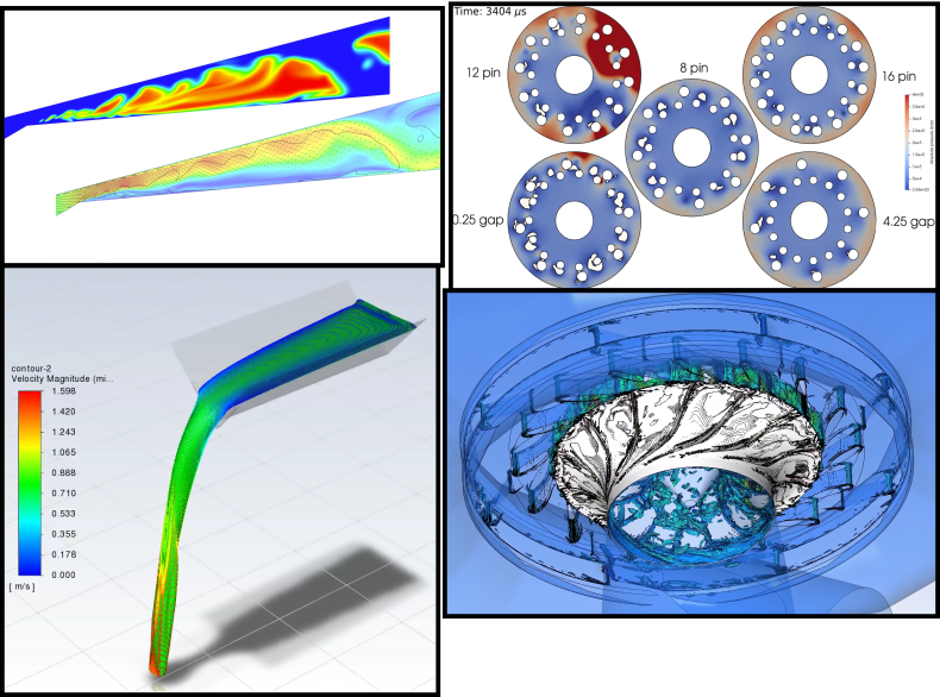Modelling
Experimental Modelling
Power engineering applications are often characterised by a large number of influencing variables whose relationships to each other are unknown and complex. Experimental modelling uses a mixture of experimental data collection methods and statistical or regression modelling techniques to gather information about the process under study. The experimental part is performed on a dedicated measurement station, often designed and built for the purpose of the experimental model. In the past, we have performed many successful implementations of purpose-built measurement stations that provide a wealth of experimental information about the process. Using the experimental data, we were able to find out the underlying relationships and minimise variables such as energy consumption, drying time, fibre length, etc.
Experimental models have been successfully used in the past for improving fibre generation distribution in mineral wool processes (https://doi.org/10.5545/sv-jme.2020.6557), household appliance operation ( https://doi.org/10.1080/07373937.2018.1502778 ), cavitation modelling (https://doi.org/10.1016/j.ijmultiphaseflow.2021.103700) , drying processes (https://doi.org/10.5545/sv-jme.2020.6717), free surface flow modelling (https://doi.org/10.1016/j.euromechflu.2020.02.001), etc.

Numerical Modelling
The use of numerical models for fluid flow simulation has become increasingly popular in recent decades. Especially recently, as the use of high performance computing (HPC) has become more affordable. Many new numerical methods and mathematical models are being developed to get a handle on the physics of turbulence and to mimic multiphase flows as accurately as possible. Currently, our numerical work is mainly focused on the application of scale resolving turbulence models and various multiphase simulations such as hydrodynamic cavitation generators, Venturi channels, small water pumps, turbines, etc (https://doi.org/10.1115/1.4045365, https://doi.org/10.1115/1.4029533). Advanced tools are also implemented and used in research in our group, such as in house models (https://doi.org/10.1016/j.ultsonch.2022.106053; https://doi.org/10.1016/j.ultsonch.2014.05.011) and advanced grid generation of structured all-hexahedron numerical grids using GridPro. We use various numerical solvers for research and industrial projects such as Ansys Fluent, Ansys CFX and OpenFoam. Optimal methods are developed to streamline the workflow of simulations that complement the actual experimental work. Scale-resolved turbulence models are progressively applied to a wide range of physically and topologically challenging numerical cases.
